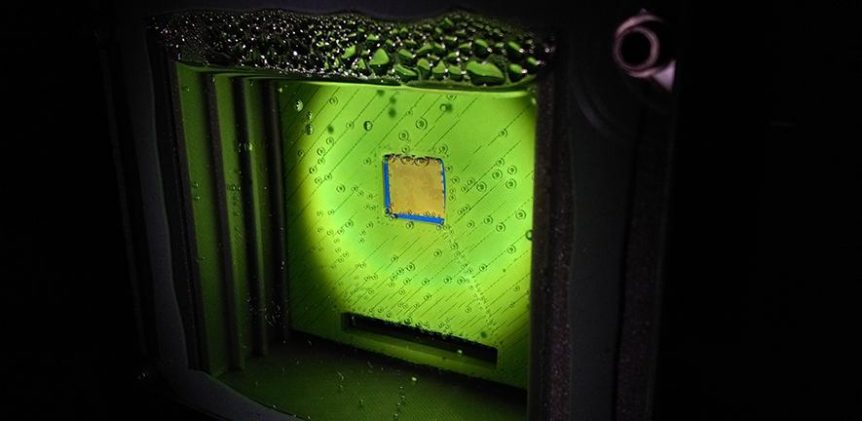Cambridge University researchers have developed a new “artificial leaf” that uses sunlight, carbon dioxide and water to directly generate “syngas,” without releasing additional CO2 into the atmosphere. As the Cambridge team reported, ‘Syngas is currently made from a mixture of hydrogen and carbon monoxide, and is used to produce a range of commodities, such as fuels, pharmaceuticals, plastics and fertilizers.” Other “leaves” have been devised, perhaps the most famous being that of Daniel Nocera, formerly at MIT and now at Harvard University. He was among the first and at the time, most successful, or the leaf producers. Note the next step he proposes at the end of the short video. Professor Erwin Reisner from Cambridge’s Department of Chemistry has been working for seven years on achieving Nocera’s desire to directly produce fuel from the elements. “You may not have heard of syngas itself but every day, you consume products that were created using it. Being able to produce it sustainably …
Turning Over a New Leaf at JCAP
The blog has covered Professor Daniel Nocera’s “artificial leaf,” a means by which a flat panel in water and exposed to sunlight would generate clean water and hydrogen. But that promising development has been set aside by the startup company Catalytix that attempted commercial development of the leaf for now. Instead, the company is now pursuing the design of a practical low-cost flow battery for grid storage. Researchers at Berkeley’s Joint Center for Artificial Photosynthesis (JCAP), though, may have found a different approach to the artificial leaf that will overcome many shortcomings in its predecessors. Gary Moore, a chemist and principal investigator with Berkeley Lab’s Physical Biosciences Division, found that in his artificial leaf, “nearly 90-percent of the electrons generated by a hybrid material designed to store solar energy in hydrogen are being stored in the target hydrogen molecules.” In fact, JCAP’s main concern is capturing sunlight and turning it to some form of fuel, exactly what a leaf does …
New “Leaf” Turns Over More Energy
Scientists have been working on imitating nature’s ability to photosynthesize the sun’s energy, much as plants turn that energy into food for their health and growth. Daniel Nocera, for instance, created an artificial leaf that split water into oxygen and hydrogen that could fire up a small fuel cell and run an electric light. According to a Science Pub lecture your editor recently attended, an eight-ounce glass of water can power a 60-Watt bulb for 20 hours. Nocera, in a Pop! Tech talk, claims an Olympic-size swimming pool could supply all the world’s energy needs. Nocera now works at Harvard, but researchers at Massachusetts Institute of Technology (MIT), his former home, are taking his work further, detailing all the limitations that keep his “artificial leaf” from giving off more storable energy. As explained in the MIT press release, “The original demonstration leaf, in 2011, had low efficiencies, converting less than 4.7 percent of sunlight into fuel… But the team’s new …
Spinach, Photosynthesis, and Solar Energy
Spinach is the Rodney Dangerfield of the vegetable kingdom, and despite the best efforts of nutritionists, Popeye, and school lunch ladies to boost its respect levels, goes unwanted by many. But not by the team at Vanderbilt University who have combined it with silicon in a “biohybrid” solar cell. According to Vanderbilt’s David Cliffel, associate professor of chemistry, “This combination produces current levels almost 1,000 times higher than we were able to achieve by depositing the protein on various types of metals. It also produces a modest increase in voltage.” Cliffel collaborated on the project with Kane Jennings, professor of chemical and biomolecular engineering. “If we can continue on our current trajectory of increasing voltage and current levels, we could reach the range of mature solar conversion technologies in three years.” Over 40 years ago, scientists found that Photosystem 1 (PS1), a protein involved in photosynthesis, continued to produce photosynthetic energy even after it was removed from its host plant. …
The Artificial Leaf
Daniel Nocera, Henry Dreyfus Professor of Energy and professor of chemistry at Massachusetts Institute of Technology (MIT), has caused a stir in the scientific community and attracted press attention including a recent feature article in the May 14 New Yorker. MIT’s own press release makes it sound all too simple and immediately appealing. “The artificial leaf — a silicon solar cell with different catalytic materials bonded onto its two sides — needs no external wires or control circuits to operate. Simply placed in a container of water and exposed to sunlight, it quickly begins to generate streams of bubbles: oxygen bubbles from one side and hydrogen bubbles from the other. If placed in a container that has a barrier to separate the two sides, the two streams of bubbles can be collected and stored, and used later to deliver power: for example, by feeding them into a fuel cell that combines them once again into water while delivering an electric …

